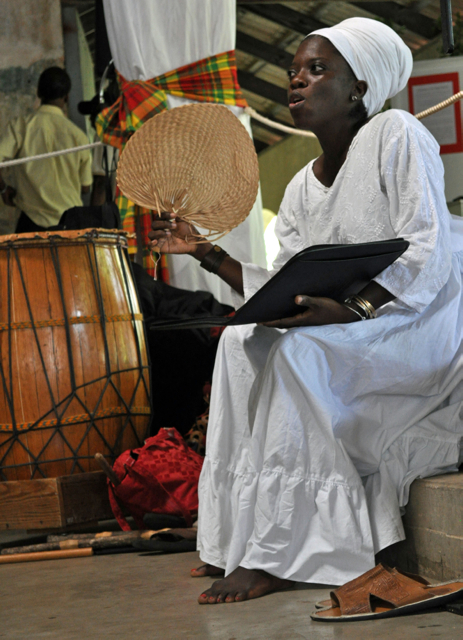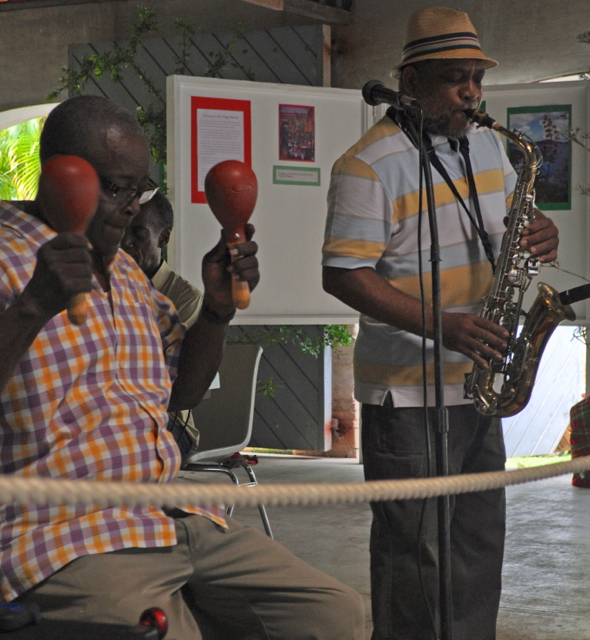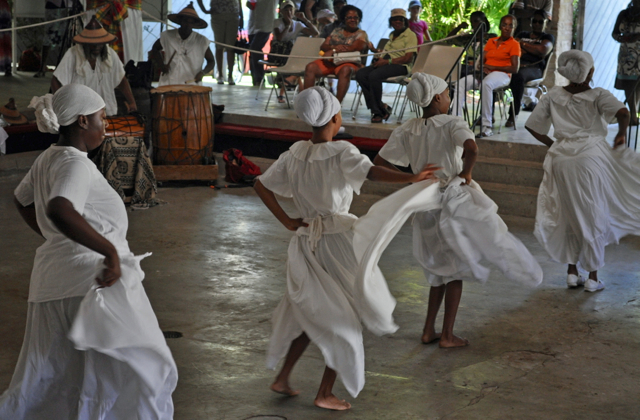
More importantly, on display were the traditions of the past and the culture of the present and how they have been shaped by Crucians interacting with the plethora of plants surrounding them.
“That’s really the connection we’re trying to make with this event; that culture is a result of an interaction between people and plants, anywhere you go,” said St. George’s Executive Director David Hamada. “You can see that influence on the plant life and all aspects of culture.”
“In the colonial period, St. George was a sugar plantation," Hamada continued, "so for almost 200 years one plant ruled the daily lives of everybody here. It was because of that plant that these buildings were built. It was because of that plant that enslaved Africans were brought here from Africa. It’s because of the value of that plant that these islands were bought, traded, sold, and fought over. It’s a really powerful background to have that and talk about how the plants have influenced life. The plants were here first. Culture and civilization developed around them.”

It was the third time the troupe had performed this re-enactment.
The performance then segued into bamboula dances and musical rhythms, which represent communication methods for celebrations, uprisings, rites of passage, sensual expressions, protest actions and more among the African people who were brought to the Caribbean and the Americas.
“Our focus here was to help give a voice from the perspective of those that were enslaved here but in a context that we can give the chronological and sequential developmental information so it’s educationally sound, “said Per Ankh co-founder Dr. Chenzira “Dr. Chen” Kahina. “At the same time it’s creative, and we do our best to pull this from Danish archival record and combine it with oral tradition and history so that it’s not always focusing on pain and the negative component, but to show how these people were resilient, how these people had self-determination, how they had strength and how they maintained their faith.”
Kahina said the bamboula has been in a period of restoration in the V.I. for the last 20 years and that the practice is a form of communicative art.

Some of the stories have been passed down through music and the lyrics in songs. Dimitri Copemann and his Renaissance band played powerfully prior to Per Ankh’s performance and Kahina said some of their insights into the lives of the slaves came from there.
“He’s (Copemann) a phenomenal ethnomusicologist,” she said. “He knows the music and the songs and the lyrics and inside those lyrics are the stories. So we compared that to what is in the archival record and what was translated for us from Danish.”
Kahina said the goal of the performance was to “become” the slaves.
“We wanted to share with the audience who they were, but from their perspective instead of the perspective of the historical record and the ‘planteacracy,’” she said.
As a former educator at the University of the Virgin Islands and a now as an educational consultant for the V.I. Department of Education, Kahina said preserving the history and heritage of St. Croix is paramount to what Per Ankh does.
“This is part of our legacy initiative,” she said. “This is what we are supposed to do. We’re supposed to be stewards and caretakers of St. Croix and we have to leave something behind. We want to be able to have our children preserve it, conserve it and respect it to the highest.”
Dr. Chenzira Kahina and the artists of Per Ankh are to be commended for their thoughtful portrayals of the lives of the seven individuals whose stories are singled out and featured as part of the Heritage Festival each year. The St. George Village Botanical Garden is fortunate to have a wealth of information regarding the history of the property beginning with the Amerindian settlement on the property dating back to 100 AD.
The seven biographies of enslaved Africans who worked at St. George were retrieved from historical data compiled by historian, George Tyson. As “property” of the colonial-era plantation owners, the lives of the enslaved were recorded based on their “value” and much information is available from that perspective. Per Ankh reminds us that this data – dates, “values”, inventories and taxes- actually represents human lives devastated by slavery, driven by the profits of the products of a plant. Per Ankh skillfully restores humanity to an otherwise dehumanizing record of people who lived and worked on St. George.
While the stories of these seven workers are an essential part of the emphasis of the Festival, there were many culture bearers and artisans who shared their knowledge, talents, and skills as part of the activities – including Veronica Gordon, Judy Bain, Lavonne Wise, Joan Keenan, Laverne Bates, Hazel St. Ange, and Olasee Davis. These invaluable human resources are reminders of the contributions of the many individuals who have made the modern-day culture of the Virgin Islands an ongoing and dynamic interaction of people and plants.